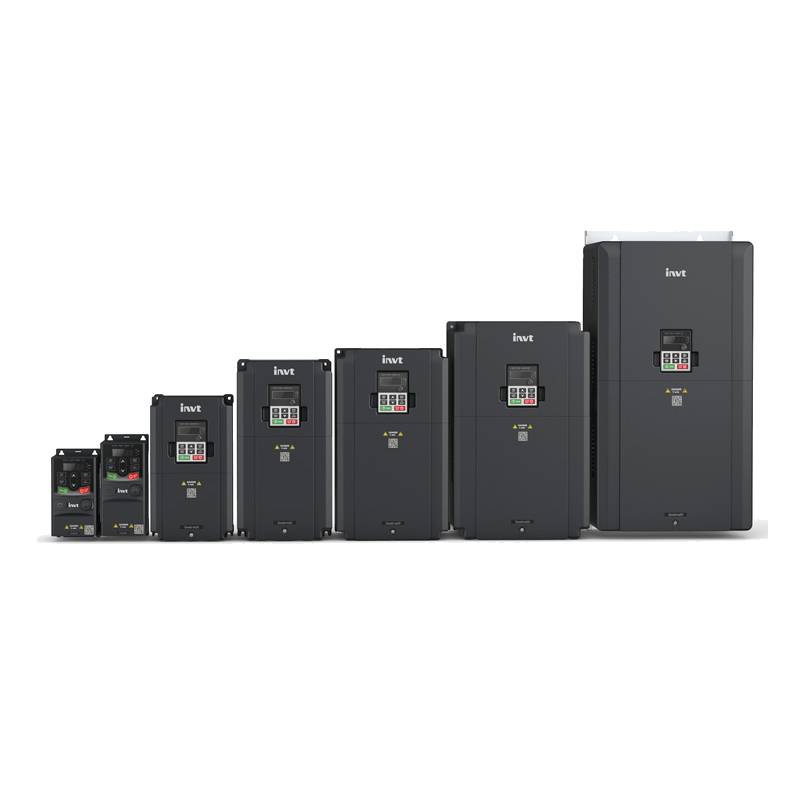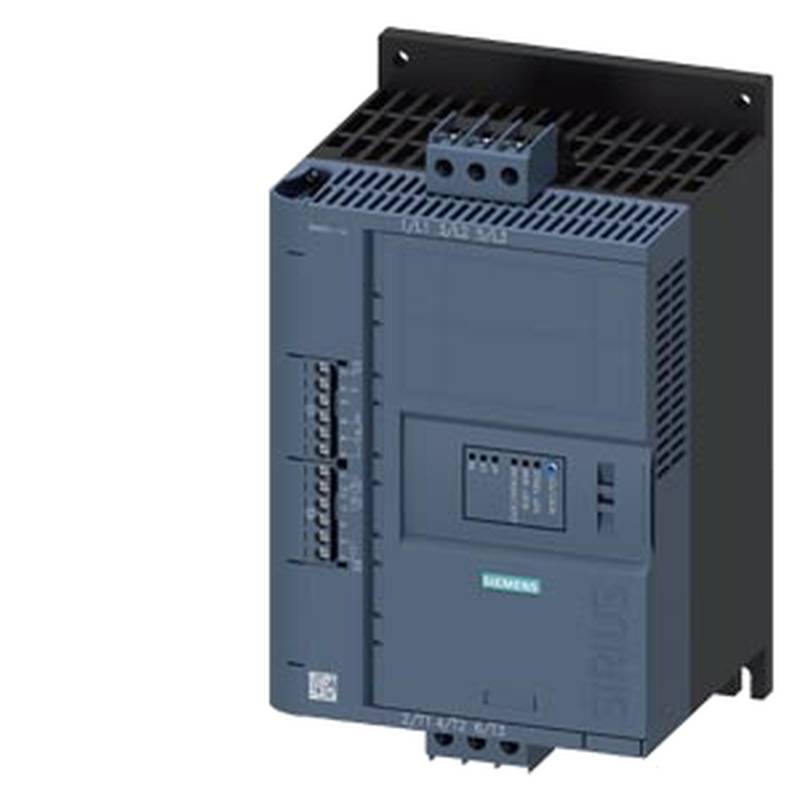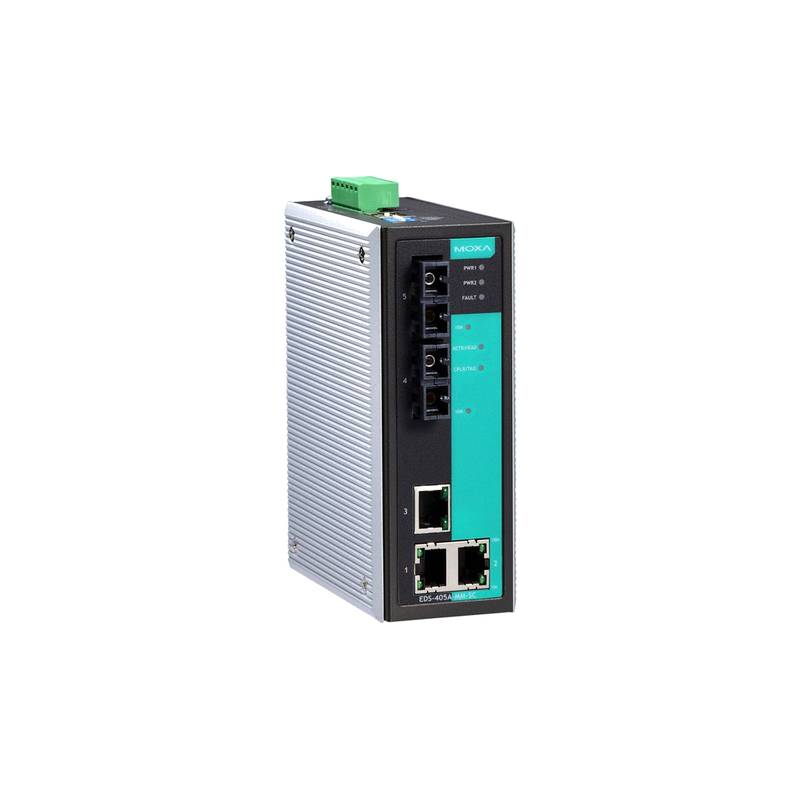
The SCHNEIDER ATV630D75N4Z Variable Speed Drive represents a robust solution for sophisticated industrial automation, delivering precise motor control and significant energy savings. This advanced frequency converter boasts a power rating of 75 kW (100 HP) and operates on a 400V power supply, making it suitable for demanding applications. Its core advantages lie in its enhanced energy efficiency, advanced control algorithms, and seamless integration capabilities within modern industrial networks. Key technical parameters include an IP20 enclosure rating for general industrial environments and a nominal IP55 option for increased protection, a sophisticated thermal management system, and a broad operating temperature range. The ATV630 series is engineered for superior performance in variable torque applications, such as pumping and ventilation, where precise speed regulation directly translates to operational efficiency and cost reduction.
Product Specifications
| Feature | Specification |
| :------------------------ | :------------------------------------------------- |
| Model | ATV630D75N4Z |
| Power Rating | 75 kW / 100 HP |
| Input Voltage | 380-400 V AC |
| Output Voltage | 380-400 V AC |
| Enclosure Rating | IP20 (standard), IP55 (optional) |
| Control Type | Voltage/Frequency (V/f), Sensorless Flux Vector |
| Mounting | Wall or cabinet mounting |
| Dimensions (H x W x D) | 715 x 450 x 310 mm (approximate for IP20) |
| Weight | 40 kg (approximate for IP20) |
| Operating Temperature | -15°C to +50°C (derating may apply) |
| Protection Features | Overcurrent, overvoltage, undervoltage, short circuit, thermal, etc. |
Core Features & Market Positioning
The SCHNEIDER ATV630D75N4Z distinguishes itself through its advanced dual-mode control, offering both traditional V/f control for simpler applications and Sensorless Flux Vector Control for highly dynamic performance without the need for motor encoders. This technological flexibility positions it as a superior choice for complex variable torque loads. Its integrated Ethernet port and support for various fieldbus protocols, including Modbus TCP/IP and EtherNet/IP, facilitate effortless integration into industrial automation systems, enhancing its value in Industry 4.0 environments. The drive's energy-saving features, such as automatic energy optimization and sleep mode, are critical differentiators, appealing to businesses focused on operational cost reduction and sustainability.
Key Application Scenarios
This SCHNEIDER ATV630D75N4Z drive is ideally suited for demanding variable torque applications. Its robust performance makes it a prime candidate for large centrifugal pumps in water treatment plants, managing flow rates efficiently and reducing wear on mechanical components. Similarly, it excels in large industrial ventilation systems, optimizing air flow in manufacturing facilities, HVAC systems, and mining operations, leading to significant energy savings. The drive's precision control also benefits conveyor systems in logistics and material handling, ensuring smooth starts, stops, and speed adjustments, thereby improving throughput and product integrity.
Practical System Integration Guidance
Integrating the SCHNEIDER ATV630D75N4Z into an industrial setup requires careful attention to wiring and configuration. Ensure all power connections adhere strictly to local electrical codes and the drive's documentation, utilizing appropriate cable gauges for the 75 kW rating. For communication, connect the integrated Ethernet port or designated fieldbus module to the network switch using CAT5e or higher shielded Ethernet cables. Initial parameter setup can be performed via the drive's local interface or using Schneider Electric's SoMove software, which simplifies tasks such as setting motor nameplate data, ramp times, and control modes. For advanced control, consider the Sensorless Flux Vector mode, which requires accurate motor data for optimal performance, and ensure proper grounding to mitigate electrical noise.
Operation and Risk Mitigation
Safe operation of the SCHNEIDER ATV630D75N4Z mandates adherence to lockout/tagout procedures during maintenance and ensuring the drive is properly discharged before accessing internal components. Common troubleshooting scenarios involve checking fault codes displayed on the drive's interface; for instance, "OC" (Overcurrent) faults often indicate motor overload or rapid acceleration, requiring a review of ramp times and load conditions. "OV" (Overvoltage) faults may point to excessive line voltage or regeneration issues, potentially necessitating an external braking resistor. Always consult the comprehensive user manual for detailed fault code explanations and corrective actions to prevent operational disruptions and ensure personnel safety.
Scalability & Long-Term Value
The SCHNEIDER ATV630D75N4Z offers significant scalability and long-term value through its compatibility with Schneider Electric's EcoStruxure™ platform, enabling remote monitoring, diagnostics, and predictive maintenance. This integration with Industrial Internet of Things (IIoT) solutions allows for data-driven optimization of motor performance and energy consumption across an entire facility. The drive's modular design also supports future upgrades, such as adding communication cards for new protocols or enhanced I/O modules, ensuring it remains relevant as industrial requirements evolve. Its robust construction and Schneider Electric's reputation for reliability contribute to a lower total cost of ownership over the product's lifecycle.
FAQs
1. What are the primary benefits of using the SCHNEIDER ATV630D75N4Z drive?
This drive offers substantial energy savings by precisely controlling motor speed based on demand. It reduces mechanical stress on equipment through soft starts and stops. Its advanced control modes ensure optimal performance and efficiency for variable torque loads.
The ATV630D75N4Z provides enhanced process control, leading to improved product quality and consistency in manufacturing. It also facilitates integration into smart factory environments with its communication capabilities. This drives operational flexibility and system uptime.
Its robust design ensures reliability in harsh industrial conditions, minimizing downtime. The drive's extensive protection features safeguard both the motor and the drive itself. This leads to a lower total cost of ownership.
2. How does the Sensorless Flux Vector Control work on the ATV630D75N4Z?
Sensorless Flux Vector Control estimates motor speed and torque without requiring a physical encoder. It uses sophisticated algorithms to analyze motor current and voltage. This allows for precise speed regulation even under varying load conditions.
This advanced control method provides dynamic response characteristics similar to closed-loop vector control. It is particularly effective for applications requiring accurate torque control or maintaining speed under sudden load changes. It eliminates the cost and maintenance associated with encoders.
The ATV630D75N4Z drive dynamically adjusts motor flux and current to maintain desired speed or torque. This method is crucial for applications like cranes, extruders, and precise material handling systems. It ensures high performance and efficiency.
3. What are the key considerations for installing the SCHNEIDER ATV630D75N4Z?
Ensure adequate ventilation space around the drive, especially if using the IP20 enclosure, to prevent overheating. Mount the drive securely on a stable surface, either vertically on a wall or within a control cabinet. Follow all electrical safety standards and use appropriately sized conductors for power input and output.
Proper grounding is essential to mitigate electromagnetic interference (EMI) and ensure safe operation. Use shielded cables for motor connections and communication lines, and terminate them correctly. Ensure the input power supply is stable and within the drive's specified voltage range.
When installing multiple drives or other heat-generating equipment in a cabinet, consider forced ventilation or air conditioning. Pre-commissioning checks, including verifying wiring and power supply, are critical before initial startup. Always refer to the installation manual for specific guidelines.
4. Can the ATV630D75N4Z drive be used with any type of motor?
The SCHNEIDER ATV630D75N4Z is primarily designed for standard AC induction motors. It supports both voltage/frequency (V/f) control and sensorless flux vector control. For optimal performance, especially with sensorless vector control, it's crucial to input the motor's nameplate data accurately.
While it's compatible with most standard asynchronous motors, using it with permanent magnet synchronous motors (PMSM) may require specific configurations or firmware updates, depending on the model's capabilities. Always consult the product documentation for detailed motor compatibility.
For special motor types, such as those with high rotor resistance or specific thermal characteristics, parameter tuning is critical. Incorrect motor data can lead to inefficient operation, reduced performance, or fault conditions. Verify motor compatibility and configuration thoroughly.
5. What are common fault codes for the ATV630D75N4Z and how are they resolved?
Common fault codes include OC (Overcurrent), OV (Overvoltage), UV (Undervoltage), and GF (Ground Fault). OC faults often indicate excessive load or too rapid acceleration settings. Resolution involves checking motor load, adjusting acceleration ramps, or verifying motor health.
OV faults can occur due to high line voltage or regeneration from the motor. Solutions may involve installing a braking resistor, ensuring stable power supply, or checking line conditions. UV faults typically point to a low input voltage; verify power source stability.
GF faults indicate a short circuit to ground. This requires inspecting motor windings, cabling, and connections for insulation breakdown or wiring errors. Always consult the drive's manual for a complete list of fault codes and specific troubleshooting steps.
6. How can I integrate the SCHNEIDER ATV630D75N4Z with my existing SCADA system?
Integration is typically achieved via the drive's communication port, commonly Ethernet or serial (RS485). The drive supports protocols like Modbus TCP/IP, EtherNet/IP, or Profibus/Profinet, depending on installed option cards. Ensure your SCADA system supports one of these protocols.
Configure the drive's communication parameters (IP address, baud rate, etc.) to match your network settings. Map the drive's data registers (e.g., speed reference, status, faults) to corresponding tags in your SCADA system. Utilize Schneider Electric's SoMove software for easier parameter and communication setup.
Establishing communication allows for remote monitoring of drive status, performance metrics, and diagnostic information. It also enables remote control functions like starting, stopping, and speed adjustment, crucial for centralized plant management. Test communication thoroughly after configuration.
7. What is the energy efficiency of the ATV630D75N4Z drive?
The ATV630D75N4Z drive significantly enhances energy efficiency, especially in variable torque applications. By adjusting motor speed to match load requirements, it avoids running motors at full speed unnecessarily. This can result in energy savings of up to 50% or more compared to fixed-speed operation.
Features like Automatic Energy Optimization (AEO) further boost efficiency by continuously fine-tuning motor voltage and flux. The drive also includes a sleep mode that powers down the motor during periods of inactivity, reducing standby power consumption. These features contribute to lower operational costs and a reduced carbon footprint.
The drive's ability to precisely control speed means processes operate at their most efficient point. This not only saves energy but also reduces wear on mechanical components, extending equipment lifespan and further contributing to overall cost-effectiveness.
8. What are the typical applications for a 75 kW VFD like the ATV630D75N4Z?
A 75 kW drive like the ATV630D75N4Z is suitable for large industrial applications with significant motor loads. This includes driving large pumps for water supply, wastewater treatment, or industrial process fluid transfer. It is also commonly used for large fans in HVAC systems, industrial ventilation, and mine ventilation.
Other common applications include material handling systems, such as large conveyor belts, crushers, and mixers in industries like mining, cement, and food processing. It can also power large extruders, injection molding machines, and other process machinery requiring precise speed control.
The drive's robust power rating makes it ideal for applications where high starting torque or sustained high power output is necessary. Its ability to handle variable torque loads efficiently makes it a cost-effective solution for many heavy-duty industrial processes.
9. Does the SCHNEIDER ATV630D75N4Z require specific motor types or can it use standard motors?
The SCHNEIDER ATV630D75N4Z drive is designed to work seamlessly with standard AC induction motors. It offers both V/f control and advanced Sensorless Flux Vector Control, which optimizes performance for these motor types without needing an encoder. Accurate entry of motor nameplate data is crucial for optimal operation.
While primarily intended for induction motors, compatibility with other motor types, like permanent magnet synchronous motors (PMSM), might be possible with specific configurations or firmware versions. Always verify the drive's specifications and manual for definitive motor compatibility details.
For standard applications, no special motor is required. The drive's flexibility allows it to adapt to various motor characteristics through parameter adjustments. Ensure the motor's voltage and frequency ratings align with the drive's capabilities.
10. How does the ATV630D75N4Z contribute to predictive maintenance?
The ATV630D75N4Z drive incorporates advanced monitoring capabilities that support predictive maintenance strategies. It can track parameters such as motor current, voltage, temperature, and operating hours, providing valuable insights into equipment health. These metrics can be trended over time to identify anomalies.
Through integration with platforms like EcoStruxure™, the drive can send this performance data to cloud-based analytics engines. These engines can predict potential failures before they occur, allowing maintenance to be scheduled proactively. This minimizes unexpected downtime and reduces repair costs.
By logging operational data and fault history, the drive provides a detailed operational profile. This historical data is invaluable for diagnosing issues, optimizing maintenance schedules, and understanding equipment wear patterns. This proactive approach ensures higher system availability and reliability.























